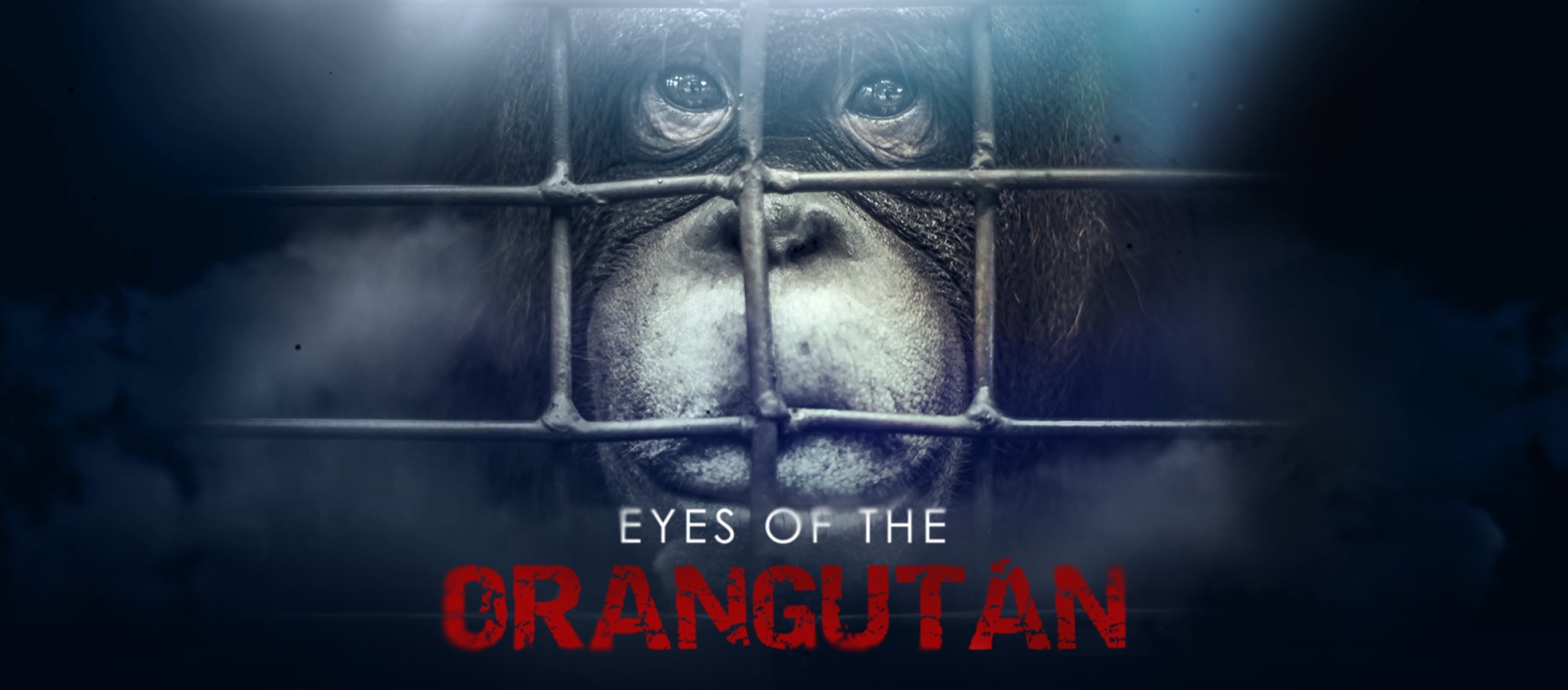
- Film
Docs: A deep look inside “Eyes of the Orangutan” will awaken one’s human soul.
The emotionally touching documentary Eyes of the Orangutan, available on-line, throws a harsh light on one of the most troubling topics: the wild-tourism industry and its enormous effect on wildlife, especially on one of our closest defenseless living relatives: the orangutan.
The captivating doc Eyes of the Orangutan is the debut feature from internationally acclaimed British wildlife filmmaker and environmental photojournalist Aaron Gekoski. The documentary shows the horrors of baby orangutans who are captured from the wild in Malaysia and Indonesia, and painstakingly highlights how these vulnerable creatures are tortured, electrocuted, beaten or food-deprived to force them to perform for tourists visiting Southeast Asia.
Eyes of the Orangutan doesn’t shy away from portraying disturbing shocking scenes of inhuman acts. It also carefully sheds a light on how orangutan-smuggling syndicates work. The film aims to open a discussion on whether tourists are just as responsible and complicit in animal abuse as the poachers.
Aaron Gekoski, who has won numerous awards, including Wildlife Photographer of the Year and Nature Photographer of the Year, wishes to educate and bring attention to the suffering of animals for tourism. In his film, Gekoski distressingly documents how poachers venture into the rainforests of Malaysia and Indonesia to slaughter female orangutans and take their babies, which are imprisoned in tiny enclosures and torture-trained to perform as bikini models or kick-boxers in venues around the region.
In an interview with Eco-Business, Gekoski had this to say: “The exploitation of orangutans as tourist attractions is particularly disturbing because of how closely related people are to these animals, whose name means people of the forest in Malay. Orangutans could be extinct in the wild in a decade, if current rates of deforestation in Indonesia and Malaysia continue. How orangutans are treated in captivity is of existential importance,” he says.
In the interview, Gekoski shared that he was in Vietnam when he encountered a large, male orangutan who was being kept in a 4-meter-by-4-meter glass enclosure with nothing but two concrete boulders cemented to the floor. “I spent a whole afternoon with this male and saw how people would come by, smack on the glass and scream at him. It was a poignant scene. I could see that this male orangutan was broken. It dawned on me that, if we are able to do this to one of our closest living relatives, what hope is there for any other species?”
Wildlife tourism is a multi-billion-dollar industry. There are a lot of shady characters in the industry with links to organized crime who are able to obtain animals from the wild who suffer tremendously. Social media has been catastrophic for captive wildlife animals. Those platforms have helped facilitate the wildlife tourism industry. Studies show how stressed and depressed orangutans get in captivity. You can really see it in their eyes. Gekoski hopes his film will have an impact and educate people on how orangutan tourism can be stopped.

